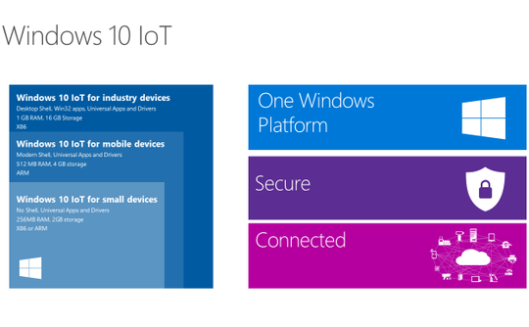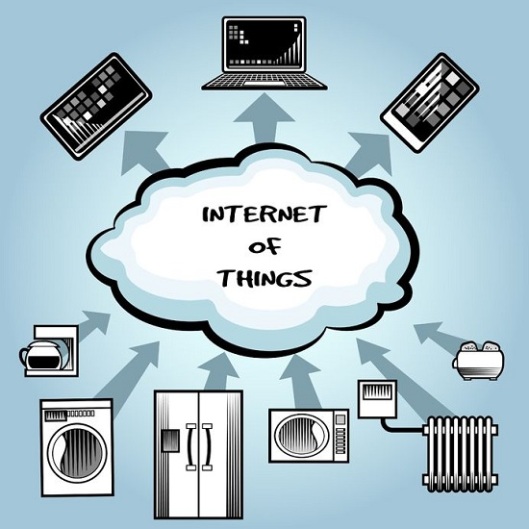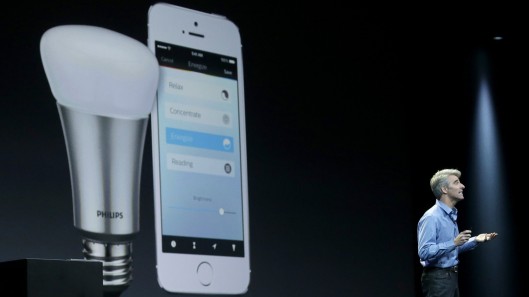
Microsoft needs Windows 10 to dominate IoT market to challenge Apple and Google
Microsoft needs Windows 10 to succeed. Its legacy desktop strength is waning after the disastrous Windows 8, it’s all but lost the mobile ecosystem battle to Android and Apple, and its own hardware launches have been mixed at best.
However, while the focus on Windows 10 will be on how it fares in Microsoft’s traditional desktop and laptop markets, there is another version of Windows 10 that Microsoft also needs to succeed: Windows 10 for the Internet of Things.
The IoT market is predicted to be worth $1.7tn by 2020, with some 38.5 billion connected devices deployed. As such, Microsoft cannot afford to miss out on this market as it did with the mobile revolution.
Richard Edwards, principal research analyst at Ovum, said that Microsoft chief executive Satya Nadella is obviously aware of this.
“Microsoft was caught wrong-footed when Google harnessed the Linux kernel to produce the Android operating system that now dominates the smartphone market, but this time, with cloud-savvy Nadella at the helm, Microsoft is ready for action,” he said.
Microsoft is issuing three versions of the new OS for IoT: Windows 10 IoT for small devices, Windows 10 IoT for mobile devices, and Windows 10 IoT for industry devices.

Windows IoT
This could see Windows 10 IoT used in traditional areas where Microsoft Embedded has been used, such as kiosks, cash machines and industrial sectors like manufacturing, but also new, emerging areas as yet unknown.
Furthermore, Windows 10 IoT is free for small devices to use which should encourage developer adoption, a move not too dissimilar to how Google offers Android as a free installation to phone manufacturers.
“Microsoft continues to remind partners and device builders that Windows 10 IoT is free for small devices, and is urging manufacturers to consider the Windows operating system as they build their new, intelligent, connected devices,” said Edwards.
Efforts to encourage the use of Windows 10 IoT have even seen Microsoft cosying up to the likes of Raspberry Pi in order to get as many people as possible to use Windows 10 in their weird and wonderful experiments.
Enterprise interest
However, while hobbyists and tinkerers are one thing, Microsoft will need to garner success in the enterprise and industrial markets to derive financial success from Windows 10 IoT.
Research by Juniper found that enterprise use of IoT will be the biggest driver of the sector as businesses embrace IoT to gain more insights into everything from manufacturing processes to products in use in the field.
But report author Steffan Sorell said that the use of IoT systems will deliver true benefits only if combined with big data technologies that can make sense of the data and cloud tools that can manage the huge volumes of data being created.
“Blindly capturing data does not lead to information. This is where businesses must identify where to add connectivity, and what the analytics should aim to achieve,” he told V3.
“In most cases, this will also involve adopting a cloud computing strategy, as most businesses will not have the infrastructure in place to cope with the volumes of gathered data.”
Enter Microsoft stage left. Its Azure cloud platform offers exactly this and it has even unveiled a dedicated Azure IoT Suite that can help businesses manage the data and services coming from IoT deployments.
“The one thing that’s going to happen with this explosion of internet-connected devices is the explosion of data that will rendezvous with the cloud,” Nadella said when the product was unveiled in March.
This aspect of Microsoft’s offering is something that Edwards from Ovum describes as “critical” and shows the company becoming an innovator in this area.
“Microsoft has been building this out over the last three years or so and we’re now seeing them being packaged for market as identifiable offerings. Microsoft has not often been seen as an innovator in the past few years but with Nadella at the helm they are definitely a leader in this area,” he told V3.
So, Microsoft has the platform to help firms manage IoT deployments and now it has the operating system to run the devices themselves. So far, so good.
However, while Microsoft is moving fast in the IoT sphere, it inevitably faces stiff competition as arch-rivals Google and Apple also look to gain a slice of the action.
Apple has its iOS-based HomeKit service, while Google has its Android-based Project Brillo.
“It’s clear that all these companies are trying to establish a bridgehead into this market so they can go forward as the market grows,” added Edwards.
So, once again, Microsoft, Apple and Google are squaring up in a fight for the future. The difference this time is that Microsoft’s Azure platform and Windows 10 IoT should mean it can put up far more of a fight than it managed in the mobile wars.
Read Full Article here …









